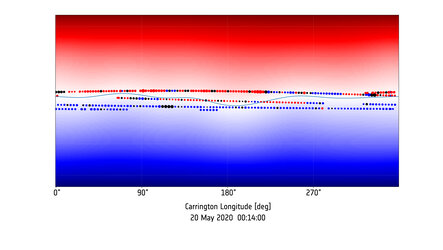Accept all cookies Accept only essential cookies See our Cookie Notice

About ESA
The European Space Agency (ESA) is Europe’s gateway to space. Its mission is to shape the development of Europe’s space capability and ensure that investment in space continues to deliver benefits to the citizens of Europe and the world.
Highlights
ESA - United space in Europe
This is ESA ESA facts Member States & Cooperating States Funding Director General Top management For Member State Delegations European vision European Space Policy ESA & EU Space Councils Responsibility & Sustainability Annual Report Calendar of meetings Corporate newsEstablishments & sites
ESA Headquarters ESA ESTEC ESA ESOC ESA ESRIN ESA EAC ESA ESAC Europe's Spaceport ESA ESEC ESA ECSAT Brussels Office Washington OfficeWorking with ESA
Business with ESA ESA Commercialisation Gateway Law at ESA Careers Cyber resilience at ESA IT at ESA Newsroom Partnerships Merchandising Licence Education Open Space Innovation Platform Integrity and Reporting Administrative Tribunal Health and SafetyMore about ESA
History ESA Historical Archives Exhibitions Publications Art & Culture ESA Merchandise Kids Diversity ESA Brand CentreLatest
Space in Member States
Find out more about space activities in our 23 Member States, and understand how ESA works together with their national agencies, institutions and organisations.
Science & Exploration
Exploring our Solar System and unlocking the secrets of the Universe
Go to topicAstronauts
Missions
Juice Euclid Webb Solar Orbiter BepiColombo Gaia ExoMars Cheops Exoplanet missions More missionsActivities
International Space Station Orion service module Gateway Concordia Caves & Pangaea BenefitsLatest
Space Safety
Protecting life and infrastructure on Earth and in orbit
Go to topicAsteroids
Asteroids and Planetary Defence Asteroid danger explained Flyeye telescope: asteroid detection Hera mission: asteroid deflection Near-Earth Object Coordination CentreSpace junk
About space debris Space debris by the numbers Space Environment Report In space refuelling, refurbishing and removingSafety from space
Clean Space ecodesign Zero Debris Technologies Space for Earth Supporting Sustainable DevelopmentSpace weather
Space weather and its hazards ESA Vigil: providing solar warning ESA Space Weather Service NetworkLatest
Applications
Using space to benefit citizens and meet future challenges on Earth
Go to topicObserving the Earth
Observing the Earth Future EO Copernicus Meteorology Space for our climate Satellite missionsCommercialisation
ESA Commercialisation Gateway Open Space Innovation Platform Business Incubation ESA Space SolutionsLatest
Enabling & Support
Making space accessible and developing the technologies for the future
Go to topicBuilding missions
Space Engineering and Technology Test centre Laboratories Concurrent Design Facility Preparing for the future Shaping the Future Discovery and Preparation Advanced Concepts TeamSpace transportation
Space Transportation Ariane Vega Space Rider Future space transportation Boost! Europe's Spaceport Launches from Europe's Spaceport from 2012Latest
Magnetic Sun
Thank you for liking
You have already liked this page, you can only like it once!
The Sun’s activity is driven by its restless magnetic field. The powerful movements of gas we see in movies of Sun, like this one taken from NASA’s Solar Dynamics Observatory (SDO) Atmospheric Imaging Assembly (AIA) instrument, are the result of invisible magnetic interactions orchestrating the activity. Unlike a simple bar magnet with its single north and south poles, the Sun’s field is highly complex. Regions of north or south polarity can appear through its surface, and they shift and change with time. This behaviour can be revealed by instruments such as SDO’s Helioseismic and Magnetic Imager (HMI), which shows these different polarities as black and white regions on the Sun. These regions show where the Sun’s magnetic field lines are reaching out into space. Some of those lines turn around and plunge back inside the solar interior. These are called closed field lines. Others stretch out into space. These are called open field lines and they form the Solar System’s interplanetary magnetic field.
A superimposition of AIA 17.1 nm images revealing the Sun’s million-degree hot corona, and the magnetic field lines derived from the HMI magnetogram, shows that the visible activity of the Sun is closely associated with the magnetic activity. Because the open field lines reach out into space, particles can flow away from the Sun creating the solar wind. These flow out past the planets of the Solar System as well as spacecraft – including ESA’s Solar Orbiter. By measuring the conditions in the solar wind, Solar Orbiter is effectively measuring the magnetic activity that has previously taken place on or near the Sun.
This powerful ‘linkage science’ is a key aspect of Solar Orbiter’s mission. It is why the instruments on the spacecraft are split into two types: in situ instruments and remote sensing. The in situ instruments record the solar wind events as they sweep past the spacecraft, whereas the remote sensing equipment looks at the Sun itself. When the in situ instruments pick up specific changes in the solar wind, data from the remote sensing instruments can be examined to see what solar event triggered those changes.
-
CREDIT
ESA/ATG medialab; NASA/SDO/Goddard -
LICENCE
ESA Standard Licence
-
Closed captions available Captions and subtitles are available (automatically generated by YouTube) - select your language using the YouTube player controls. A non-YouTube version is available using the 'download' button above.
-
Animation
-
-
-

How a solar switchback is formed

Measuring the Sun’s magnetic field

PHI sees mixed-up magnetism at the Sun's south pole

PHI's pole-to-pole view of the Sun's magnetic field















 Germany
Germany
 Austria
Austria
 Belgium
Belgium
 Denmark
Denmark
 Spain
Spain
 Estonia
Estonia
 Finland
Finland
 France
France
 Greece
Greece
 Hungary
Hungary
 Ireland
Ireland
 Italy
Italy
 Luxembourg
Luxembourg
 Norway
Norway
 The Netherlands
The Netherlands
 Poland
Poland
 Portugal
Portugal
 Czechia
Czechia
 Romania
Romania
 United Kingdom
United Kingdom
 Slovenia
Slovenia
 Sweden
Sweden
 Switzerland
Switzerland

























